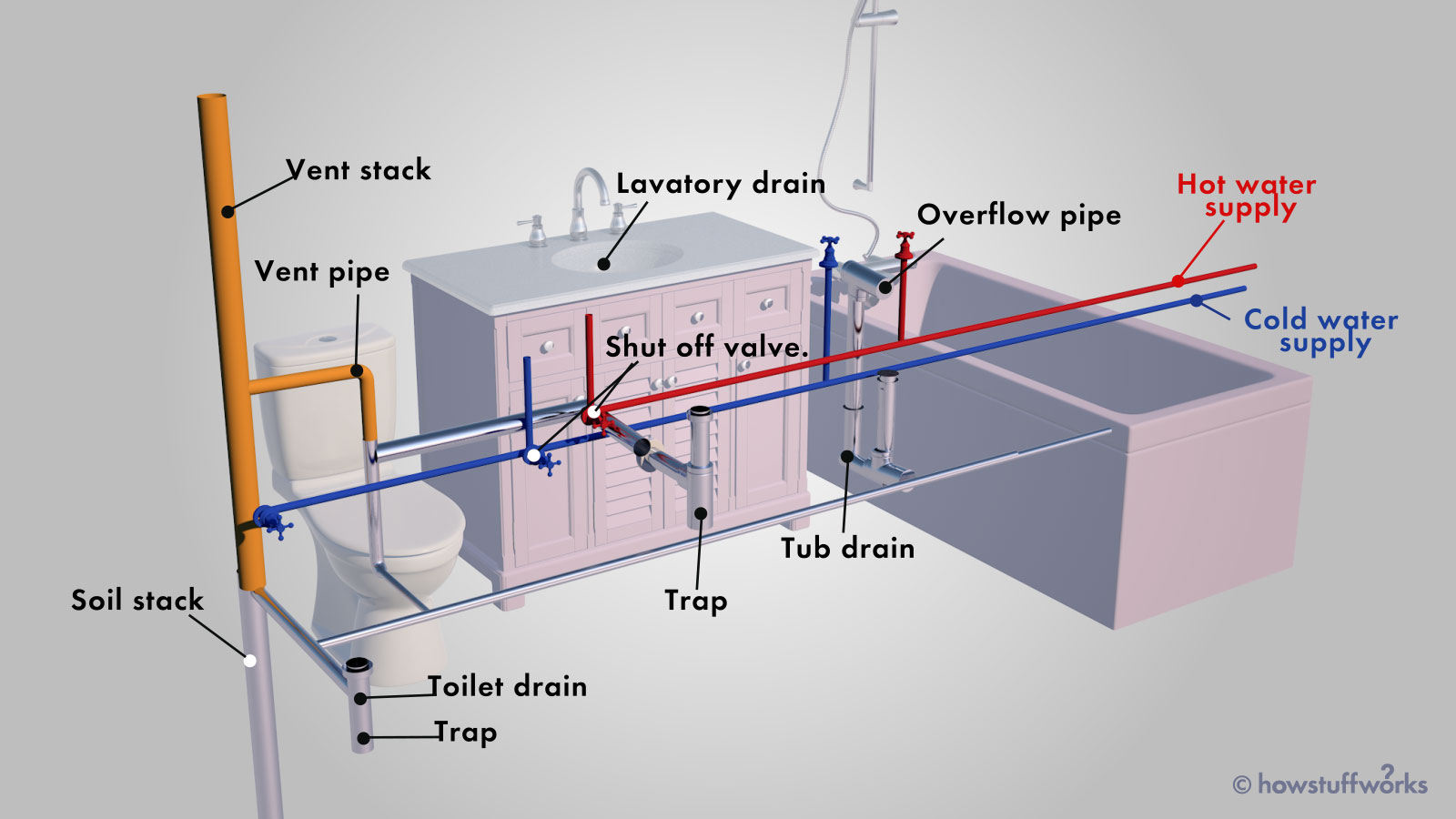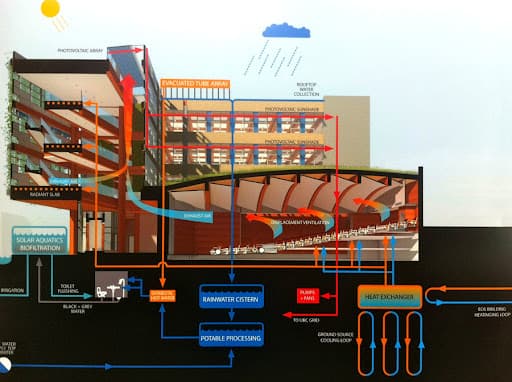A Closer Look at The Layout of Your Home's Plumbing System
A Closer Look at The Layout of Your Home's Plumbing System
Blog Article
Have you been on the lookout for details involving Understanding Your Home's Plumbing Anatomy?

Recognizing how your home's pipes system functions is important for every house owner. From delivering clean water for alcohol consumption, food preparation, and showering to safely eliminating wastewater, a properly maintained plumbing system is important for your family members's health and comfort. In this detailed overview, we'll explore the elaborate network that composes your home's pipes and offer suggestions on maintenance, upgrades, and managing usual issues.
Introduction
Your home's plumbing system is greater than just a network of pipes; it's a complicated system that guarantees you have accessibility to tidy water and reliable wastewater removal. Understanding its elements and just how they interact can aid you avoid expensive fixings and ensure everything runs smoothly.
Fundamental Parts of a Pipes System
Pipelines and Tubes
At the heart of your pipes system are the pipes and tubing that carry water throughout your home. These can be made of different materials such as copper, PVC, or PEX, each with its benefits in regards to toughness and cost-effectiveness.
Components: Sinks, Toilets, Showers, and so on.
Components like sinks, commodes, showers, and bathtubs are where water is made use of in your house. Recognizing just how these components attach to the pipes system aids in detecting troubles and intending upgrades.
Shutoffs and Shut-off Factors
Shutoffs regulate the circulation of water in your pipes system. Shut-off shutoffs are vital throughout emergency situations or when you require to make repair services, permitting you to separate parts of the system without interrupting water circulation to the entire home.
Supply Of Water System
Main Water Line
The main water line connects your home to the municipal supply of water or a private well. It's where water enters your home and is dispersed to different fixtures.
Water Meter and Pressure Regulator
The water meter measures your water use, while a pressure regulatory authority makes certain that water moves at a risk-free pressure throughout your home's plumbing system, preventing damages to pipelines and fixtures.
Cold Water vs. Hot Water Lines
Comprehending the difference between cold water lines, which supply water straight from the major, and hot water lines, which carry heated water from the hot water heater, assists in fixing and planning for upgrades.
Water drainage System
Drain Pipes Pipeline and Traps
Drain pipes lug wastewater far from sinks, showers, and toilets to the sewer or septic system. Catches avoid sewer gases from entering your home and additionally trap debris that can trigger clogs.
Air flow Pipes
Ventilation pipelines enable air into the water drainage system, avoiding suction that could reduce drain and cause catches to empty. Correct air flow is important for keeping the stability of your plumbing system.
Relevance of Appropriate Water Drainage
Making sure proper water drainage avoids back-ups and water damage. Consistently cleaning up drains and preserving traps can stop pricey repairs and expand the life of your plumbing system.
Water Furnace
Types of Hot Water Heater
Hot water heater can be tankless or standard tank-style. Tankless heaters warm water as needed, while storage tanks save heated water for instant use.
Upgrading Your Pipes System
Reasons for Upgrading
Updating to water-efficient fixtures or changing old pipes can enhance water top quality, decrease water costs, and increase the worth of your home.
Modern Plumbing Technologies and Their Benefits
Discover technologies like clever leak detectors, water-saving bathrooms, and energy-efficient hot water heater that can save money and lower environmental effect.
Price Considerations and ROI
Determine the ahead of time costs versus long-lasting financial savings when considering pipes upgrades. Several upgrades pay for themselves with lowered energy costs and fewer repair work.
Exactly How Water Heaters Attach to the Plumbing System
Understanding exactly how hot water heater connect to both the cold water supply and hot water circulation lines aids in detecting issues like inadequate hot water or leakages.
Upkeep Tips for Water Heaters
Regularly flushing your hot water heater to get rid of debris, checking the temperature settings, and checking for leakages can expand its lifespan and improve energy effectiveness.
Usual Plumbing Problems
Leakages and Their Reasons
Leakages can take place as a result of aging pipes, loose fittings, or high water pressure. Attending to leaks quickly stops water damages and mold and mildew development.
Obstructions and Clogs
Obstructions in drains pipes and commodes are often triggered by purging non-flushable things or a build-up of oil and hair. Making use of drain displays and being mindful of what goes down your drains can prevent clogs.
Indications of Plumbing Problems to Watch For
Low water pressure, slow drains, foul odors, or unusually high water costs are indicators of possible pipes troubles that must be attended to immediately.
Plumbing Maintenance Tips
Regular Inspections and Checks
Schedule yearly pipes examinations to capture problems early. Search for signs of leaks, deterioration, or mineral buildup in faucets and showerheads.
DIY Upkeep Tasks
Straightforward tasks like cleaning faucet aerators, looking for commode leaks using dye tablet computers, or protecting subjected pipes in cold climates can prevent significant plumbing issues.
When to Call a Professional Plumber
Know when a pipes problem requires professional experience. Trying complicated repairs without correct understanding can result in even more damages and higher repair prices.
Tips for Decreasing Water Usage
Straightforward behaviors like taking care of leaks without delay, taking shorter showers, and running full loads of washing and meals can conserve water and reduced your utility bills.
Eco-Friendly Pipes Options
Think about sustainable pipes materials like bamboo for floor covering, which is durable and environment-friendly, or recycled glass for kitchen counters.
Emergency Readiness
Actions to Take During a Pipes Emergency
Know where your shut-off shutoffs are located and how to shut off the water supply in case of a ruptured pipeline or major leakage.
Significance of Having Emergency Situation Get In Touches With Handy
Maintain contact info for neighborhood plumbings or emergency situation services conveniently available for quick feedback during a pipes crisis.
Ecological Impact and Preservation
Water-Saving Fixtures and Home Appliances
Mounting low-flow taps, showerheads, and toilets can dramatically reduce water use without giving up performance.
Do It Yourself Emergency Fixes (When Appropriate).
Short-lived fixes like utilizing air duct tape to patch a dripping pipeline or placing a container under a trickling faucet can lessen damages until an expert plumbing professional arrives.
Final thought.
Recognizing the anatomy of your home's plumbing system equips you to keep it effectively, saving money and time on fixings. By following routine upkeep regimens and staying informed regarding modern-day pipes technologies, you can ensure your plumbing system runs successfully for years to come.
HOW YOUR PLUMBING SYSTEM WORKS
Which Pipes Do What?
Blue lines = fresh water supply entering the building Red lines = hot water supply entering the building Grey lines = pipes carrying waste away from the building and venting pipes carrying gases away from the building (through the roof) YOUR MAIN PLUMBING SYSTEMS
There are two main plumbing systems that support your home s basic plumbing needs one that brings clean water into your home, and one that sends dirty water away from your home. Connected to the toilet, bath, shower, and other faucets in your home, these two systems keep your water flowing in the right directions.
ACCESSING FRESH WATER
Fresh and clean water is brought into your home through the main water supply line . Filtered through one pipe, this water is pressured to flow into the various fixtures in your home at any given time.
This water can be sourced from a well located on your property, a pond or river (mostly cottages), or, as in most cases, from the city s municipal water treatment centre. However, it is important to note that water that is untreated, such as the water siphoned from ponds or rivers, may not be safe to drink. Personal water supplies always need to be treated for hardness and contaminants before consumed.
MUNICIPAL WATER SUPPLIES
Improve taste and odour Remove sediment Eliminate hardness Reduce chlorine COLD WATER SUPPLY VS. HOT WATER SUPPLY
Cold water flows into your home or building through the service line, which then distributes hot or cold water to your fixtures. This line is most commonly run through a central column that runs floor to floor. Hot water runs in short and straight pipes as the longer the pipeline, the more heat that will be lost in the transfer. Having shorter pipes also allows residents to access hot water more quickly.
WASTE WATER SYSTEM
Your wastewater system is divided into two parts pipes that send wastewater away from your home and venting pipes that send sewer gas away from your home. Sewage water travels through pipes that flush the water and waste towards local sewers that are operated and managed by your city or town. Most sewer systems rely on gravity to move the wastewater to where it needs to go.
The further away from your toilet or sink, the larger wastewater pipes become. This allows for waste to be disposed of from various parts of your home or business at once without pipe blockages. The angle and flow of these pipes are also essential for keeping your waste pipes clear of build up.
https://harrisplumbing.ca/how-your-home-plumbing-system-works/

We were brought to that write-up about The Inner Workings of Your Home's Plumbing from a pal on another domain. Enjoyed our posting? Please quickly share it. Let somebody else locate it. I value your readership.
Schedule A Service Call Report this page